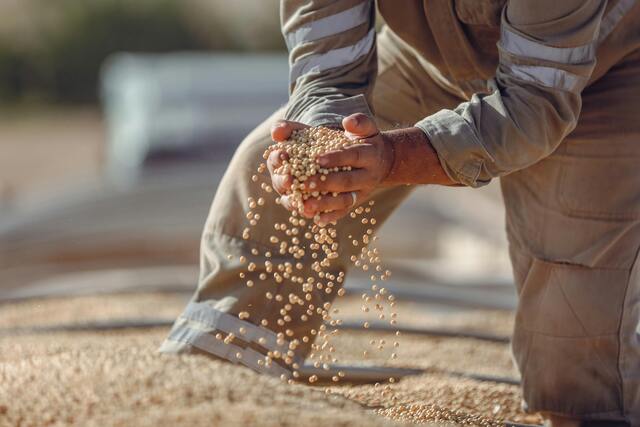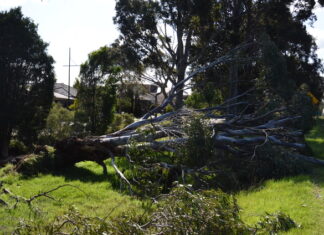
Australian beef producers signal confidence and stability amid shifting conditions
The latest Beef Producer Intentions Survey (BPIS) released by Meat & Livestock Australia (MLA) has shown that producers are confident in the sector’s outlook. It has also signalled producers are maintaining stable herd management strategies despite regional, national and global challenges.
The April edition of the 2025 survey, of 3,116 grass-fed beef producers across Australia provides a comprehensive snapshot of herd demographics, producer sentiment, breeding and sales intentions, and market dynamics.
Producer sentiment nationally has strengthened with a net sentiment score of +53, up from +47 in November 2024.
MLA expands market insights with launch of two new livestock indicators
Meat & Livestock Australia (MLA) has today unveiled two new livestock market indicators: the National Feeder Heifer Indicator (NFHI) and the Online Sheep Indicator (OSI), marking a significant step forward in livestock market transparency and decision-making support.
These indicators are the latest refinement of MLA’s National Livestock Reporting System (NLRS), which already covers more than 50 physical saleyard markets and produces 18 price indicators.
The NFHI and OSI are designed to provide producers, processors, and stakeholders with more targeted, real-time insights into two critical market segments.
The launch reflects MLA’s commitment to delivering practical tools that help producers make informed decisions.
Grains and oilseeds trade continues to grow, despite global upheaval – Rabobank World Map
The global grains and oilseeds trade continues to grow steadily and reached around 880 million metric tons in 2023/24, with an estimated value of USD 330 billion, according to Rabobank’s published global grains and oilseeds world map.
The sixth edition of the map and accompanying report – charting recent global production, consumption and trade – found despite the sharp price spike caused by the war in Ukraine, trade volumes have increased over the past five years, by a compound annual growth rate (CAGR) of 3.2 per cent for grains and 2.4 per cent for oilseeds from 2018 to 2023. Albeit, the report says, at a slower pace compared to the seven per cent CAGR seen in the previous decade.
Australian Beef Sustainability Framework welcomes five new Steering Group members
The Australian Beef Sustainability Framework (ABSF) has announced the appointment of five new members to its Steering Group (SG), bringing a wealth of experience and regional representation to guide the Framework.
The ABSF sets out the key indicators of performance in sustainability for the beef industry. It enables success to be recognised through evidence-based metrics and empowers the industry to continually improve and demonstrate its values to customers, investors and stakeholders.
According to the ABSF’s SG Chair, Patrick Hutchinson, the ABSF plays an essential role in Australian beef production.
Agricultural outlook for June: Lamb lifts, dairy disappoints, grain markets at critical juncture
The recent release of the Bendigo Bank Agribusiness Monthly Commodity Update finds that lamb producers look set to enjoy continuing high prices for heavy lambs, while grain markets face global supply pressures and potentially market-defining rainfall. The impact of drought and flooding on Australia’s dairy farmers has hit around 60 per cent of the industry, placing further pressure on milk production and input costs with global prices easing and the possibility of new season production falling to as low as 8.1 billion litres if adverse seasonal conditions are sustained.
Senior Manager Industry Affairs, Bendigo Bank Agribusiness, Neil Burgess said after breaking records in May, heavy lamb prices are expected to remain firm, albeit perhaps not at record levels throughout June, with supply expected to slow over the next few weeks offering continued support for prices. Ongoing dry conditions are also encouraging lamb and mutton turn-off which will further keep processors busy.
Australian Beef Sustainability Framework welcomes EU recognition of land management practices
The Australian Beef Sustainability Framework (ABSF) has welcomed the announcement from the European Commission that Australia is considered a low risk under its upcoming European Union Deforestation Regulation (EUDR).
Chair of the ABSF Steering Group, Patrick Hutchinson, said this was well-deserved recognition of the industry’s efforts with vegetation management.
“This is a positive reflection of industry’s strong sustainability credentials. The ABSF will continue to objectively measurement of forests, woodlands, and grasslands managed within our industry,” Mr Hutchinson said.
The latest vegetation figures from the Balance of Tree and Grass Cover mapping show that in 2022 net woody vegetation on cattle grazing land increased by almost 750,000 hectares in one year.
In Queensland, the net area of forest increased by over one million hectares. At a national level, the area of cattle grazing land meeting Australian forest thresholds reached 69.95 million hectares – its highest point since monitoring began in 1995.
Near-record Australian beef production volumes balanced with improving global demand
Australian beef production in 2025 is expected to come close to equalling production records set in 2024, Rabobank says in its newly-released Australian Beef Seasonal Outlook 2025.
The annual report, by the agribusiness banking specialist’s RaboResearch division, says the high beef production volumes are being matched by growing global demand – with the relatively-balanced market expected to support stable prices and good returns for Australian beef producers.
Report author, RaboResearch senior animal proteins analyst Angus Gidley-Baird said successive favourable seasons – with the exception of ongoing significant dry areas in Victoria and southeast South Australia – have allowed Australian cattle numbers to build.
Australia heading towards record-high winter crop planting
Australia’s farmers are heading towards a record-high winter crop planting this year, Rabobank says in its newly-released 2025/26 Australian Winter Crop Outlook.
The annual outlook, by the agribusiness banking specialist’s RaboResearch division, says the nation’s grain growers are expected to plant an estimated 24.5 million hectares of winter crop this year, up 0.8 per cent on last season.
The forecast increase is largely driven by good soil moisture levels in northern New South Wales and Queensland, as well as a “positive gross margin outlook” for most crop types.
Area planted to crops is expected to be up in all states, except for South Australia – where many regions have been struggling with severe drought conditions. Victoria – which has also been impacted by drought in many western parts of the state – is expected to see cropping area edge up only fractionally.
The overall rise in national planted area is expected to benefit most crops, except for wheat, where area is forecast to drop – especially in Western Australia – impacted by rising fertiliser prices and less optimistic market prospects.
Despite the projected overall increase in Australia’s winter cropping area, RaboResearch is currently forecasting total production for the 2025/26 harvest to come in below last year, at a “base case” of 53.9 million tonnes, compared with 59.7 million tonnes for last year’s crop.





